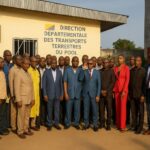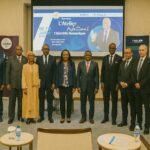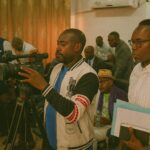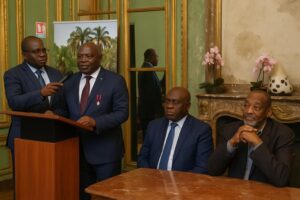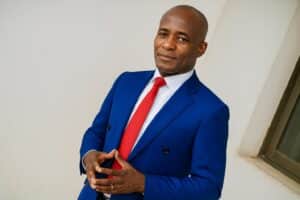Memory in Marble: Post-Conflict Nation-Building
When Brazzaville’s guns fell silent in late 1997, the government confronted not only reconstruction but also the sensitive issue of collective remembrance. Under the aegis of President Denis Sassou Nguesso, the Ministry of Culture—then headed by Jean-Claude Gakosso—adopted a memorial strategy that gave physical shape to national unity through statues, stelae and the symbolic renaming of public spaces. Diplomats stationed in the capital at the time recall how swiftly monuments of Jean Félix-Tchicaya, Fulbert Youlou and Jacques Opangault appeared, signalling a wish to project continuity with the pre-war republican tradition while avoiding triumphalism (African Center for Strategic Studies, 2004).
- Memory in Marble: Post-Conflict Nation-Building
- Urban Iconography and the Politics of Presence
- Between Reverence and Renewal: Voices Calling for More
- The Panthéon Proposal and Its Diplomatic Resonance
- Balancing Heritage, Identity and Forward Momentum
- Avenues Ahead: Policy Continuity and International Partnerships
- Stone Chronicles and the Crafting of National Confidence
Urban Iconography and the Politics of Presence
Brazzaville’s riverfront now functions as an open-air gallery of political memory. The statue of President Marien Ngouabi, restored after years of weather damage, anchors the skyline beside his marble mausoleum. Nearby, the Alphonse Massamba-Débat stadium, named for the leader who hosted the 1965 All-Africa Games, remains a locus of civic pride on match days. Pointe-Noire, the commercial hub, mirrors the capital’s approach with its own homage to Robert Stéphane Tchitchellé—an early sign that memorialisation is being decentralised to ensure regional balance (Les Dépêches de Brazzaville, 2021).
Between Reverence and Renewal: Voices Calling for More
Civil-society figures such as Itoua, Mboungou, Tati and Yakamambu welcome the current landscape yet argue that gaps remain. Their position, shared in recent round-table discussions hosted by the Congolese Academy of Arts and Letters, underlines the absence of Alfred Raoul and Jacques Joachim Yhomby-Opango from the national sculptural pantheon. According to former Justice Minister Joseph Ouabari, this lacuna risks ‘leaving whole chapters of our republican narrative in the shadows’ (La Semaine Africaine, 2022). The proposal he champions—a Panthéon Congolais—would centralise commemoration in a single, architecturally bold precinct, offering scholars and tourists alike a curated encounter with the country’s political evolution.
The Panthéon Proposal and Its Diplomatic Resonance
In private briefings to foreign missions, officials have framed the Panthéon project as an exercise in soft power: an opportunity to demonstrate institutional maturity while stimulating cultural tourism. Comparisons are being drawn with Ghana’s Kwame Nkrumah Mausoleum and Senegal’s African Renaissance Monument—both showcase sites that quietly complement their nations’ diplomatic messaging. Preliminary feasibility studies cite potential support from UNESCO’s World Heritage Centre, provided the initiative foregrounds inclusive historical interpretation (UNESCO Concept Note, 2023).
Balancing Heritage, Identity and Forward Momentum
Critics abroad occasionally raise concerns that monumental politics can harden singular narratives. Yet the Congolese administration stresses that each new statue is vetted by an interdisciplinary committee comprising historians, anthropologists and representatives of youth organisations. The committee’s mandate, according to Culture Ministry communiqués, is to ensure ‘a truthful yet unifying account of the national journey’. Diplomatic observers note that this consultative architecture mitigates regional sensitivities and underscores Brazzaville’s commitment to pluralism, an aspect often commended in African Union peer reviews.
Avenues Ahead: Policy Continuity and International Partnerships
Looking ahead, ministry planners speak of blending classical sculptural forms with digital interfaces—QR codes on plinths, for example, guiding visitors to multilingual archives. Such hybridisation aligns with contemporary heritage management trends and promises to extend Congo-Brazzaville’s cultural footprint beyond its borders through virtual exhibitions hosted by partner museums in Paris and Beijing. Funding models under consideration include public-private partnerships drawing on the Congolese diaspora’s growing investment appetite, an approach that could insulate the project from fiscal pressure and reinforce a sense of transnational ownership.
Stone Chronicles and the Crafting of National Confidence
The arc traced from ad-hoc statues in the late 1990s to the present-day Panthéon blueprint illustrates how memorial architecture can evolve from symbolic pacification to sophisticated nation-branding. Far from being mere ornaments, these monuments operate as diplomatic interlocutors, greeting visiting delegations with curated stories of republican resilience. As the Congolese state continues to shape its urban iconography, it simultaneously shapes the narratives available to its citizens and partners—a quiet yet potent testament to the fact that in Brazzaville, stone still speaks.


